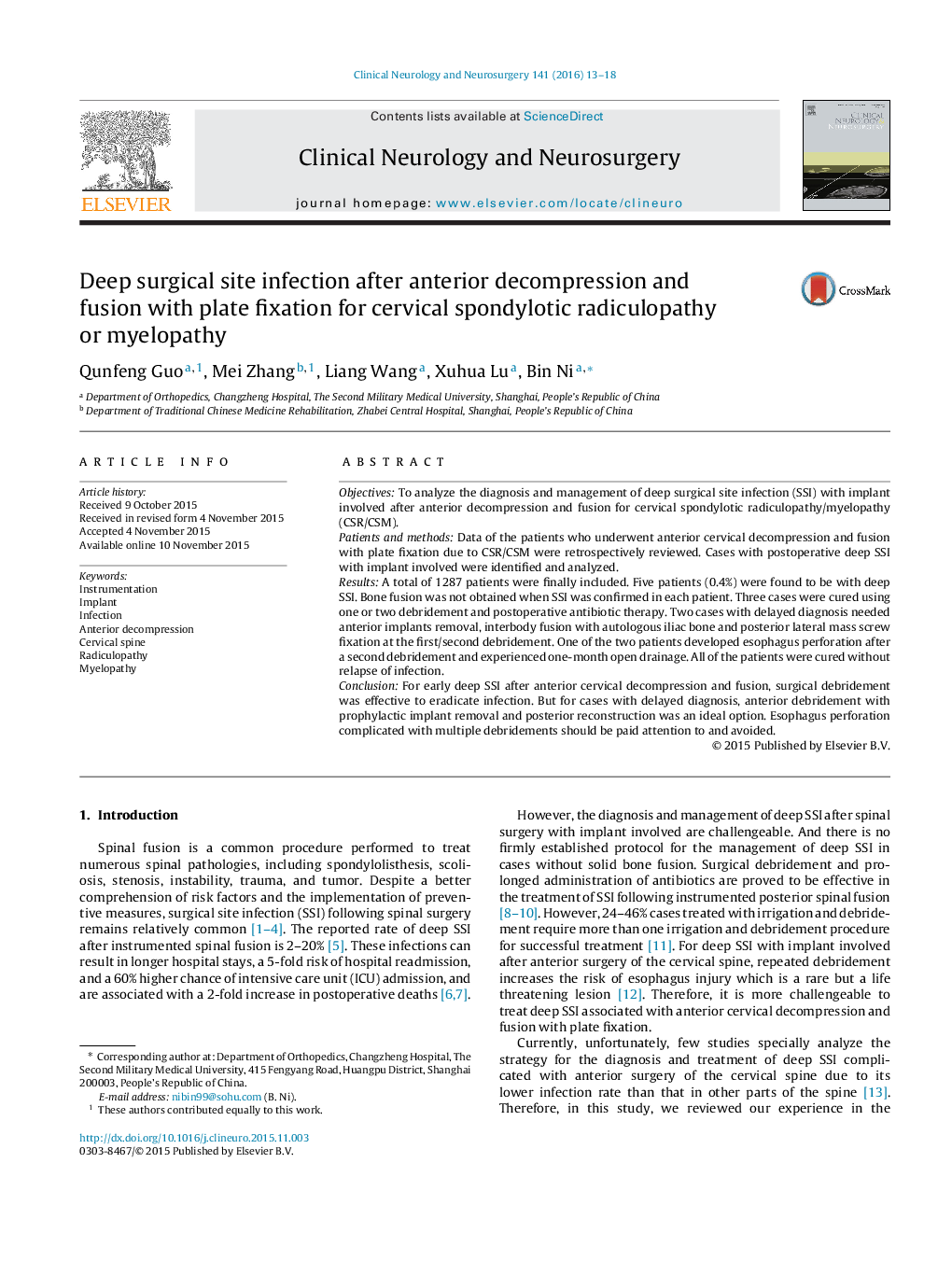| Article ID | Journal | Published Year | Pages | File Type |
|---|---|---|---|---|
| 3039572 | Clinical Neurology and Neurosurgery | 2016 | 6 Pages |
•Treatment of deep SSI after anterior cervical spine surgery is challengeable.•Surgical debridement was effective to eradicate early deep SSI.•Anterior multiple debridements for late deep SSI have the risk of esophagus injury.•Anterior implant removal and posterior fixation should be done for late deep SSI.
ObjectivesTo analyze the diagnosis and management of deep surgical site infection (SSI) with implant involved after anterior decompression and fusion for cervical spondylotic radiculopathy/myelopathy (CSR/CSM).Patients and methodsData of the patients who underwent anterior cervical decompression and fusion with plate fixation due to CSR/CSM were retrospectively reviewed. Cases with postoperative deep SSI with implant involved were identified and analyzed.ResultsA total of 1287 patients were finally included. Five patients (0.4%) were found to be with deep SSI. Bone fusion was not obtained when SSI was confirmed in each patient. Three cases were cured using one or two debridement and postoperative antibiotic therapy. Two cases with delayed diagnosis needed anterior implants removal, interbody fusion with autologous iliac bone and posterior lateral mass screw fixation at the first/second debridement. One of the two patients developed esophagus perforation after a second debridement and experienced one-month open drainage. All of the patients were cured without relapse of infection.ConclusionFor early deep SSI after anterior cervical decompression and fusion, surgical debridement was effective to eradicate infection. But for cases with delayed diagnosis, anterior debridement with prophylactic implant removal and posterior reconstruction was an ideal option. Esophagus perforation complicated with multiple debridements should be paid attention to and avoided.
